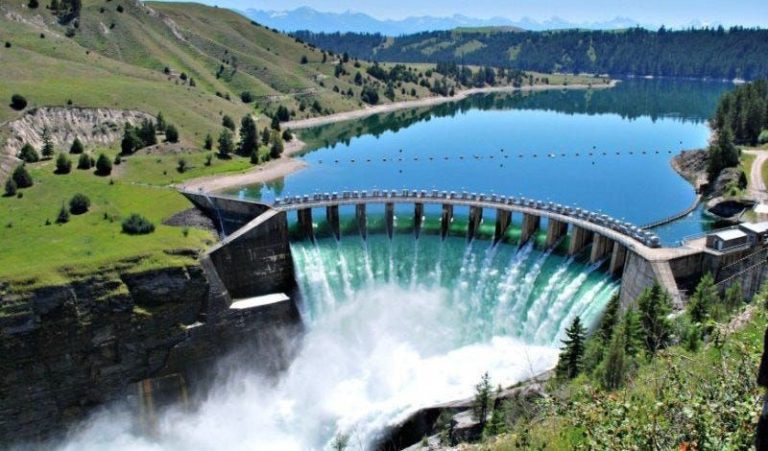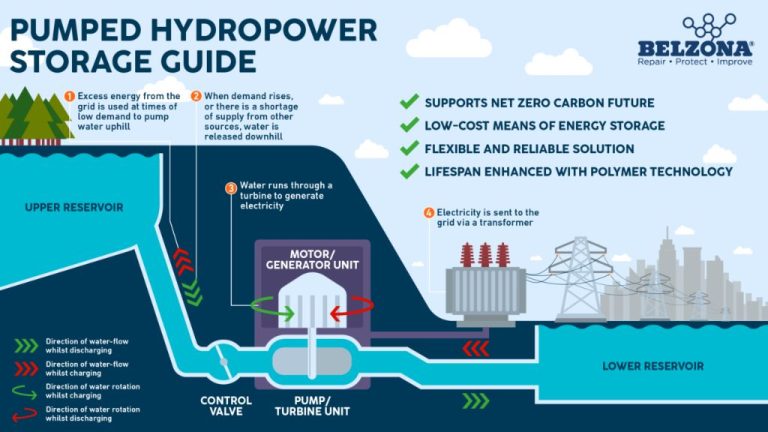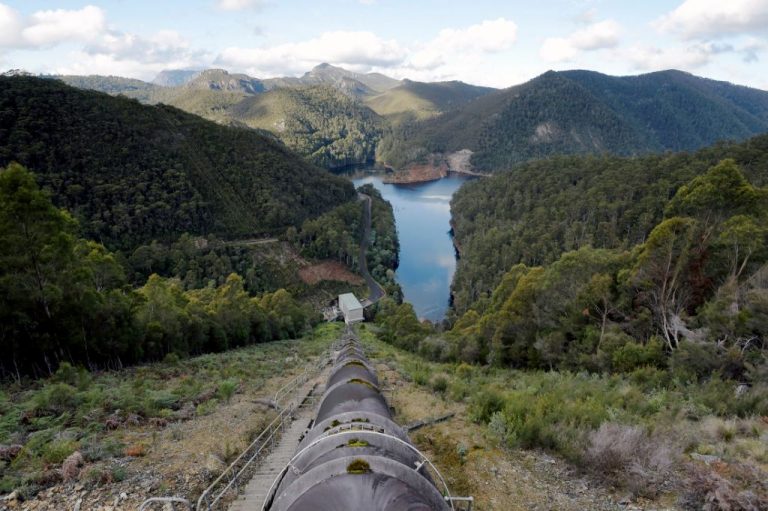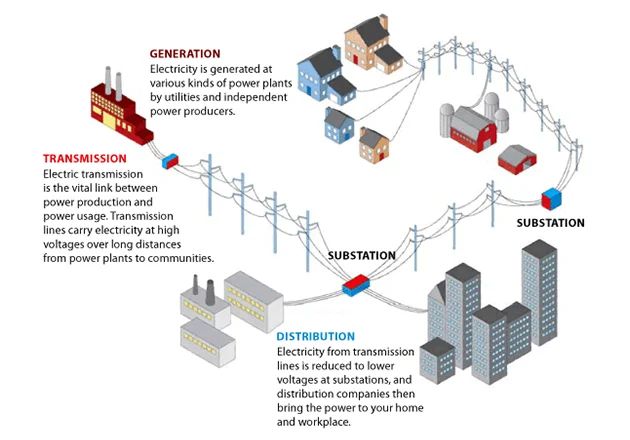What River Is A Major Source Of Hydroelectric Power?
Hydroelectric power is a form of renewable energy that generates electricity by using the natural flow of water. Rivers are an ideal source for hydroelectric power because their flowing water represents a huge amount of kinetic energy that can be harnessed and converted into electricity.
At hydroelectric plants, the force of moving water as it flows downstream is channeled through turbines and generators to produce electricity. Rivers that have steep elevation drops and strong flows are especially good sources of hydroelectric power. Dams are often constructed to control river flows and create reservoirs, allowing hydroelectric plants to generate a stable supply of electricity.
This article will discuss some of the world’s major rivers that are used extensively for hydroelectric power generation, including the Yangtze River in China, the Congo River in Africa, the Paraná River in South America, the Churchill River in Canada, the Columbia River in the United States, the Volta River in Ghana, and the Rhine River in Europe. The scale of hydroelectric development on these rivers demonstrates their enormous potential as renewable energy sources.
The Yangtze River
The Yangtze River, located in China, is the third longest river in the world stretching over 3,900 miles across the country. The Yangtze River is home to the Three Gorges Dam, the largest hydroelectric power station in the world. According to Britannica, the Three Gorges Dam has a generating capacity of 22,500 megawatts, making it the most productive hydroelectric plant globally. When the dam became fully operational in 2012, it surpassed the Grand Coulee Dam with over three times its generating capacity of 6,809 megawatts.
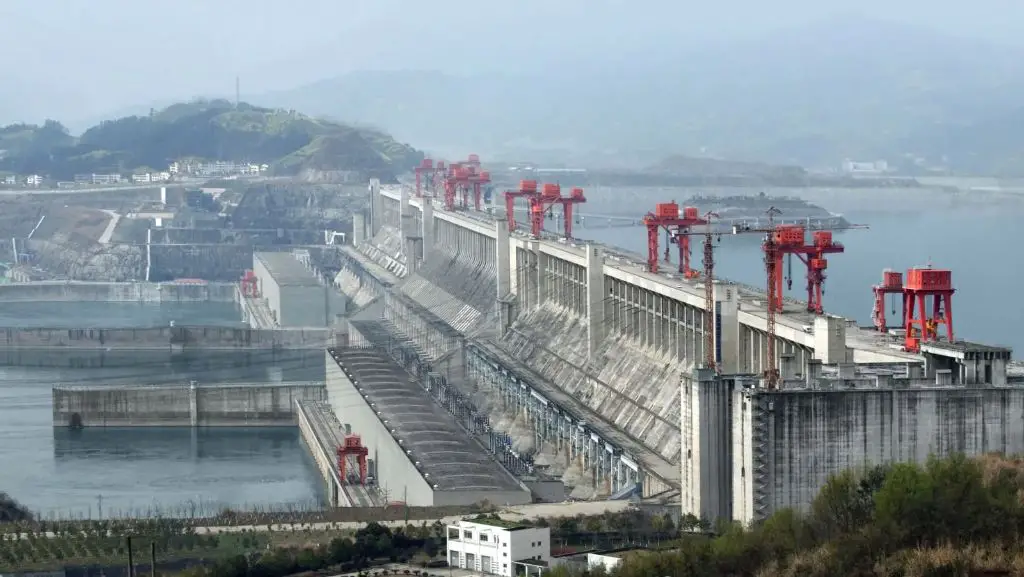
The massive scale of the Three Gorges Dam project on the Yangtze River in China is captured in images from the Earth Observatory. As noted, the dam’s 22,500 megawatt hydroelectric power capacity is unmatched across the globe.
The Congo River
The Congo River, located in Africa, is the second largest river by discharge volume. Originating from the highlands of the East African Rift and draining into the Atlantic Ocean at an immense flow rate, its massive watershed spans across several distinct regions.
One of the Congo River’s most notable features is the Inga Dam, located on the lower Congo River approximately 220 miles from the river’s mouth. With an installed capacity of 1,424 MW from six turbines, the Inga II Dam is one of the largest hydroelectric facilities in the world1. The dam is part of a larger complex known as the Grand Inga Dam project, envisioned to span the width of the river and provide over 40,000 MW of electricity upon completion.
The Congo River’s enormous hydropower potential, stemming from its vast discharge and large elevation drop to the Atlantic, is important for providing electricity in Central Africa. The Inga dams represent attempts to harness this potential and support development in the region.
The Paraná River
The Paraná River is located in South America and is the second longest river on the continent, behind only the Amazon River in length. The Paraná River flows through Brazil, Paraguay, and Argentina, providing water resources and critical habitat throughout its expansive drainage basin.
One of the most significant features of the Paraná River system is the numerous large hydroelectric dams that generate massive amounts of electricity. The most famous and productive of these dams is the Itaipu Dam, located on the border between Brazil and Paraguay. The Itaipu Dam is one of the largest hydroelectric facilities in the world. In 2018 alone, the electricity generated by Itaipu accounted for nearly 90% of the electricity consumed in Paraguay and approximately 15% of the electricity used in Brazil.
Overall, the Paraná River’s numerous dams, especially massive projects like the Itaipu Dam, make this river system critical for hydroelectric power generation across parts of South America.
The Churchill River
The Churchill River is located in Labrador, Canada where it flows east for over 700 miles before emptying into the Atlantic Ocean.
The Churchill River feeds into several major hydroelectric facilities on its tributaries, most notably the Churchill Falls Generating Station on the Churchill River’s main tributary, the Churchill Falls. With an installed capacity of 5,428 MW, the Churchill Falls Generating Station is one of the largest underground power stations in the world.[1]
To increase the amount of water flowing into its hydroelectric facilities, a portion of the Churchill River has been diverted into the Smallwood Reservoir on the upper Churchill Falls through the Churchill River Diversion project. This allows more water to flow downstream to the power stations.[2]
In addition to providing substantial hydroelectric power, the Churchill River system supports recreation, hunting and fishing activities throughout Labrador.[3]
The Columbia River
The Columbia River is located in western North America. It flows through British Columbia, Canada and the US states of Washington, Oregon, Idaho, and Montana (Dams and Hydroelectricity in the Columbia River Basin). The Columbia is the largest river in the Pacific Northwest region of North America.
The Columbia River is heavily dammed and the site of major hydroelectric projects. There are over 150 hydroelectric dams in the Columbia River basin, including 18 dams along the mainstem of the river (Columbia River Basin Dams – Northwestern Division). Major dams on the Columbia include the Grand Coulee Dam and Bonneville Dam. These dams provide a substantial amount of hydroelectric power to the region.
The Volta River
The Volta River is located in west Africa, flowing through the countries of Benin, Burkina Faso, Cote d’Ivoire, Ghana, Mali, and Togo. However, the river is particularly notable for being an important source of hydroelectric power in Ghana. The Akosombo Dam was constructed along the Volta River in southeastern Ghana during the 1960s. When it was completed in 1965, the Akosombo Dam was considered the largest human-made lake in the world based on surface area, flooding much of the Volta River Basin. Today, the Akosombo Dam provides the majority of Ghana’s electricity supply through hydropower generation. In fact, the Akosombo power plant has an installed capacity of 1,020 megawatts, generating much of Ghana’s electricity. So the Volta River, especially where it flows through Ghana, serves as a critically important source of renewable hydroelectric power for the country. Harnessing the river’s flow through the Akosombo Dam has enabled Ghana to tap into clean, domestic electricity generation for decades.
The Rhine River
The Rhine River is located in Europe and originates in Switzerland. It flows through Germany and the Netherlands before emptying into the North Sea. The Rhine is an important European river that has been used for transportation and power generation for centuries.
There are several hydroelectric dams along the Rhine River that produce renewable energy for the region. According to the Encyclopedia Britannica, the remaining four of a total of eight dams utilize Rhine water by the construction of canal loops only (https://www.britannica.com/place/Rhine-River/Hydrology). The dams with hydropower facilities include the Augst/Wyhlen Dam with two power plants, the Albbruck-Dogern Dam, the Reckingen Dam, the Rheinfelden Dam, and the Kembs Dam (Britannica). These dams and hydro plants provide a source of clean, renewable electricity to communities along the Rhine.
Other Notable Examples
There are several other major rivers around the world that are significant sources of hydroelectric power, including:
- The Amazon River – This is the largest river by discharge volume in the world. Major hydroelectric dams on the Amazon include the Tucuruí Dam in Brazil, which has a capacity of over 8,000 MW.
- The Mekong River – Flowing through China, Myanmar, Laos, Thailand, Cambodia and Vietnam, the Mekong has over 60 hydropower dams planned or already constructed. The Xayaburi Dam in Laos has a capacity of 1,285 MW.
- The Zambezi River – In Africa, the Zambezi river basin contains two of the continent’s biggest hydropower stations – the Kariba Dam shared between Zambia and Zimbabwe at 2,080 MW, and the Cahora Bassa Dam in Mozambique at 2,075 MW.
- The Brahmaputra River – A major river in Asia, the Brahmaputra has significant hydro potential. The Dibang multipurpose project underway in India will have an installed capacity of 2,880 MW.
While not as large in scale as the biggest hydroelectric dams in the world, these rivers represent significant renewable energy resources in the regions they flow through.
Conclusion
We discussed several of the world’s major rivers that contribute significantly to hydroelectric power generation, such as the Yangtze River in China, the Congo River in Africa, and the Paraná River in South America. Other important examples include the Churchill River in Canada, the Columbia River in the US, the Rhine River in Europe, and the Volta River in Ghana. These are just some of the rivers that have large hydroelectric dams and provide renewable electricity to communities and industries across the globe.
Hydroelectric power is an essential renewable energy resource worldwide. Rivers allow us to generate emission-free electricity through hydropower projects and dams. As countries work to reduce their dependence on fossil fuels and increase clean energy capacity, major rivers with hydroelectric potential can provide a vital source of renewable power generation now and into the future. Protecting these rivers and developing projects sustainably will help ensure rivers continue playing a crucial role in the world’s renewable energy landscape.

